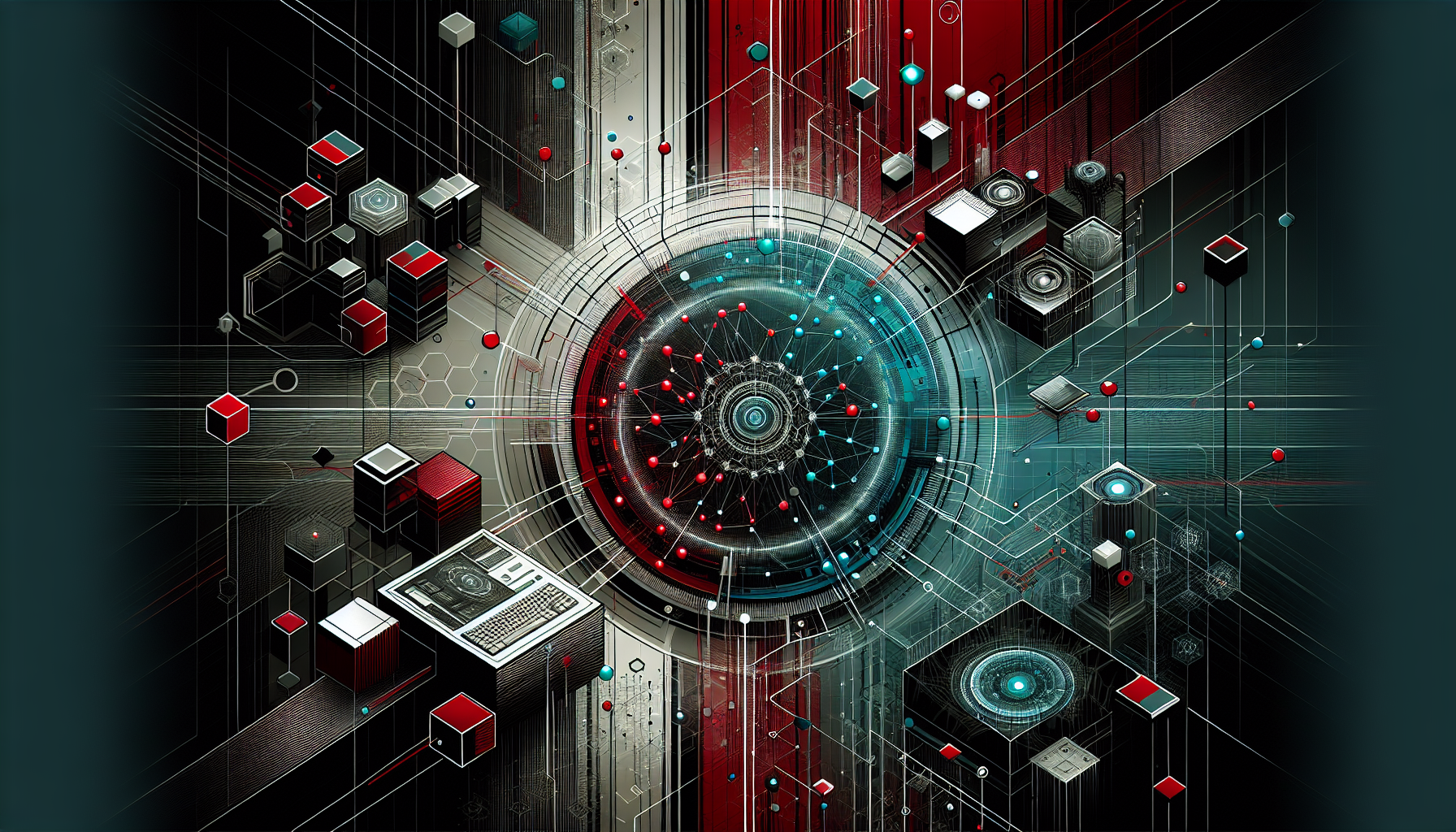Accelerating CI/CD Pipelines with AI

Accelerating CI/CD Pipelines with AI
Key Areas of AI-Driven CI/CD Acceleration
| Area | AI Application | Impact |
|---|---|---|
| Build Optimization | Predictive caching, parallelization | Faster builds, reduced wait time |
| Intelligent Testing | Test selection, flakiness detection | Shorter, more reliable test cycles |
| Code Quality & Security | Automated code review, vulnerability scan | Early detection of issues |
| Deployment Automation | Anomaly detection, rollback triggers | Safer, adaptive deployments |
| Monitoring & Feedback | Incident prediction, root cause analysis | Proactive issue resolution |
AI-Enhanced Build Optimization
Predictive Build Caching
Traditional CI/CD pipelines often rebuild unchanged components, wasting resources and time. AI can analyze build histories and code changes to predict which modules require rebuilding.
Example Implementation:
- Train a model on historical build logs and source control diffs.
- Integrate the model as a pre-build step to skip unnecessary builds.
Sample (Python pseudo-code):
from sklearn.ensemble import RandomForestClassifier
def should_rebuild(change_features):
# Assume clf is a trained classifier
return clf.predict([change_features])[0]
# In your pipeline script:
for module in modules:
features = extract_features(module)
if should_rebuild(features):
build(module)
Parallelization Guidance
AI models can recommend optimal build job distribution across available runners based on historical resource usage and build times, maximizing throughput.
Intelligent Test Selection and Prioritization
Test Impact Analysis
Running all tests for every commit is inefficient. AI models can predict which tests are most impacted by a given code change.
Step-by-Step:
- Collect data mapping code changes to affected tests (via coverage tools).
- Train a classifier or use graph-based models to predict test impact.
- Integrate the prediction in CI, running only relevant tests.
Example:
# GitHub Actions snippet
jobs:
test:
steps:
- name: Predict Impacted Tests
run: |
python predict_tests.py --diff ${{ github.sha }}
- name: Run Selected Tests
run: |
pytest $(cat selected_tests.txt)
Flaky Test Detection
AI can analyze test results over time to detect flakiness patterns, automatically quarantining unreliable tests and reducing false negatives.
Automated Code Review and Security Scanning
AI-Powered Code Review
Machine learning models (e.g., OpenAI Codex, DeepCode) can review pull requests for style, bug risks, and anti-patterns, commenting directly for human approval.
Integration Example:
- Set up a GitHub Action that runs a code review bot on each PR.
- The bot uses AI APIs to scan diffs and post comments.
Vulnerability Detection
AI-driven static analysis tools (e.g., Snyk, SonarQube with ML plugins) can uncover security flaws during the pipeline run, blocking deployments if critical issues are found.
Deployment Automation with Anomaly Detection
Adaptive Rollbacks
AI models can monitor deployment metrics (latency, error rates, user behavior) and trigger automated rollbacks or canary promotions based on anomaly detection.
Example:
- Integrate an anomaly detection service (e.g., AWS CloudWatch Anomaly Detection, Azure Monitor) in deployment scripts.
- Use detected anomalies to gate progressive releases.
# Pseudo-code for deployment gating
if detect_anomaly(metrics):
rollback_deployment()
else:
promote_canary()
Traffic Shaping
AI can predict load patterns and dynamically adjust deployment strategies (e.g., blue/green, canary) for minimal disruption.
Proactive Monitoring and Feedback Loops
Incident Prediction
AI models can forecast incidents before they happen by analyzing logs, metrics, and traces, allowing teams to address issues proactively.
Root Cause Analysis
Natural Language Processing (NLP) and clustering can help correlate logs and metrics, suggesting probable root causes directly in the CI/CD dashboard.
Comparative Table: Traditional vs. AI-Accelerated CI/CD
| Aspect | Traditional Pipeline | AI-Accelerated Pipeline |
|---|---|---|
| Build Time | Full or manual incremental | Intelligent, predictive caching |
| Test Execution | Full suite, static order | Selective, dynamic prioritization |
| Code Review | Manual or static linting | Automated, context-aware feedback |
| Security Checks | Rule-based scanning | AI-enhanced vulnerability detection |
| Deployment | Manual or basic automation | Adaptive, anomaly-triggered actions |
| Monitoring | Reactive alerting | Predictive, proactive resolution |
Practical Steps to Implement AI in Your CI/CD Pipeline
-
Audit Existing Pipeline:
Identify bottlenecks (slow builds, long test cycles, frequent rollbacks). -
Select Appropriate AI Tools:
- Predictive build/test selection: Use open-source (e.g., Diffblue, TestImpact) or cloud-based solutions.
- Code review: Integrate bots (e.g., GitHub Copilot, DeepCode).
-
Anomaly detection: Use cloud-native (AWS, Azure) or open-source (Prometheus with ML extensions).
-
Integrate via Pipeline Scripts:
- Use plugins or custom scripts to invoke AI services.
-
Ensure AI models are retrained regularly with new data.
-
Monitor & Measure:
- Track key metrics (build time, test duration, incident frequency).
- Compare performance against baseline to validate improvements.
Example: Integrating AI Test Selection in Jenkins
Step 1: Train Test Impact Model
- Collect code changes and test result data.
- Train a model to map changes to test files.
Step 2: Jenkins Integration
pipeline {
agent any
stages {
stage('Predict Tests') {
steps {
sh 'python predict_tests.py --diff $GIT_COMMIT > tests_to_run.txt'
}
}
stage('Run Tests') {
steps {
sh 'pytest $(cat tests_to_run.txt)'
}
}
}
}
Step 3: Monitor Results
- Analyze test pass/fail rates and build acceleration.
- Adjust model thresholds as needed.
Summary Table: Common AI Tools for CI/CD
| Tool/Service | Purpose | Integration Points |
|---|---|---|
| Diffblue Cover | Test generation/selection | Build, Test stages |
| DeepCode/Snyk | Code review, security | PR, Pre-merge |
| AWS CodeGuru | Review, runtime profiling | Build, Deploy, Monitor |
| Azure Monitor AI | Anomaly detection | Deploy, Monitor |
| TestImpact | Test selection | Pre-test |
Direct adoption of AI in CI/CD pipelines reduces cycle times, increases reliability, and lets engineering teams focus on innovation by automating and optimizing repetitive pipeline tasks.





0 thoughts on “Accelerating CI/CD Pipelines with AI”